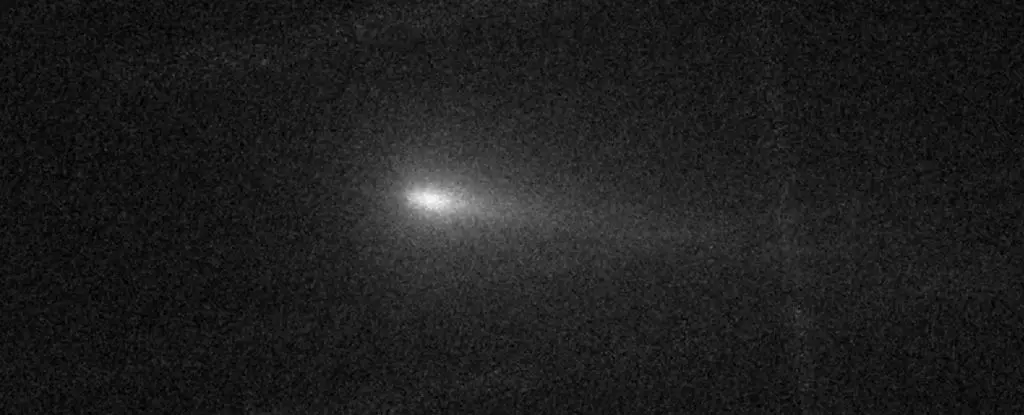Comets have long captured the imagination of stargazers and astronomers alike, their mesmerizing trails illuminating the night sky with a promise of cosmic wonders. Among the latest entries in this shimmering cast of celestial visitors is Comet C/2024 S1, which entered our solar system with great anticipations. However, as the days draw closer to its expected performance around Halloween in 2024, this comet is exhibiting more signs of disintegration than spectacle, raising questions about the volatile nature of these icy travelers.
Initially, the scientific community recognized C/2024 S1 as a Kreutz sungrazer, a type of comet known for its spectacular encounters with the Sun. Discovered on September 27, 2024, this comet was predicted to approach within a mere 1.2 million kilometers (or 750,000 miles) of our star on October 28, 2024, igniting hopes that it would showcase a breathtaking display visible to the naked eye—a once-in-a-lifetime experience coinciding perfectly with Halloween festivities.
Unfortunately, over the course of October, it became evident that C/2024 S1 would not fulfill its promising potential. Observational data revealed a disconcerting trend: though the comet initially brightened significantly due to outburst activity, it later showed signs of fading, with its nucleus fading substantially and leaving behind a mere tail of debris. This stark change is not entirely surprising, as comets of this nature frequently disintegrate when they venture too close to the Sun, revealing an inherent fragility in these magnificent ice balls.
The Science of Disintegration
The evolution of C/2024 S1 reflects complex processes at play within the comets that traverse our solar system. The brightening events, more formally known as outbursts, are often a precursor to catastrophic fragmentation. Such outbursts occur when the comet experiences rapid sublimation, wherein ice converts into gas, forming a surrounding envelope of volatile materials. This sudden release can create centrifugal forces that accelerate the comet’s spin, potentially leading to its break-up—a phenomenon observed in past comets, such as Comet C/2019 Y4, which met a similar fate.
The intriguing aspect of C/2024 S1 lies in its potential dual origin as both a fragment and a future witness. It is theorized that all Kreutz sungrazers, including C/2024 S1, are remnants of a larger comet that broke apart during a historic encounter with the Sun in 1106 CE. The fragments from this grand disintegration led to the birth of various smaller comets, showcasing a generational link between past and present cosmic bodies.
Despite the alarming signs of disintegration, there are scenarios where the comet could still display a captivating spectacle. Should a sizeable portion of its nucleus survive—an infrequent but possible occurrence—C/2024 S1 may yet follow its fateful journey toward perihelion, potentially dazzling observers with a prolonged tail, even in the absence of a visible nucleus. In this context, the comet’s historical context adds a layer of intrigue; it serves as a successor in a long line of celestial debris, tracing back to the Great Comet of 1106 CE.
Amateur astronomers and stargazers, especially those in the Southern Hemisphere, have an opportunity to observe the impending disintegration of C/2024 S1 firsthand. Equipped with binoculars or small telescopes, they might catch a glimpse of this spectacular event. After the comet reaches perihelion, if any detectable remnant remains, its visibility could extend to the Northern Hemisphere, though anticipation must be tempered by the uncertainty of its condition.
A Cosmic Lesson
C/2024 S1’s foreshadowed demise serves as a poignant reminder of the enigmatic nature of comets. They are more than mere visitors; they embody the dynamics of our solar system, revealing the interactions between gravity, temperature, and time. As we study these celestial wanderers, we gain insight into the nature of our universe, illustrating the balance between beauty and impermanence.
The unfolding drama of C/2024 S1 encourages us to appreciate the fleeting moments of cosmic wonder. While this comet may not be the spectacular Halloween display we hoped for, its story illustrates the intricacies of celestial phenomena. For astronomers and enthusiasts alike, the journey thus far is a reminder to remain curious, embrace the surprises the cosmos offers, and keep looking skyward—where mysteries abound, waiting to be unveiled. Happy stargazing!

Leave a Reply